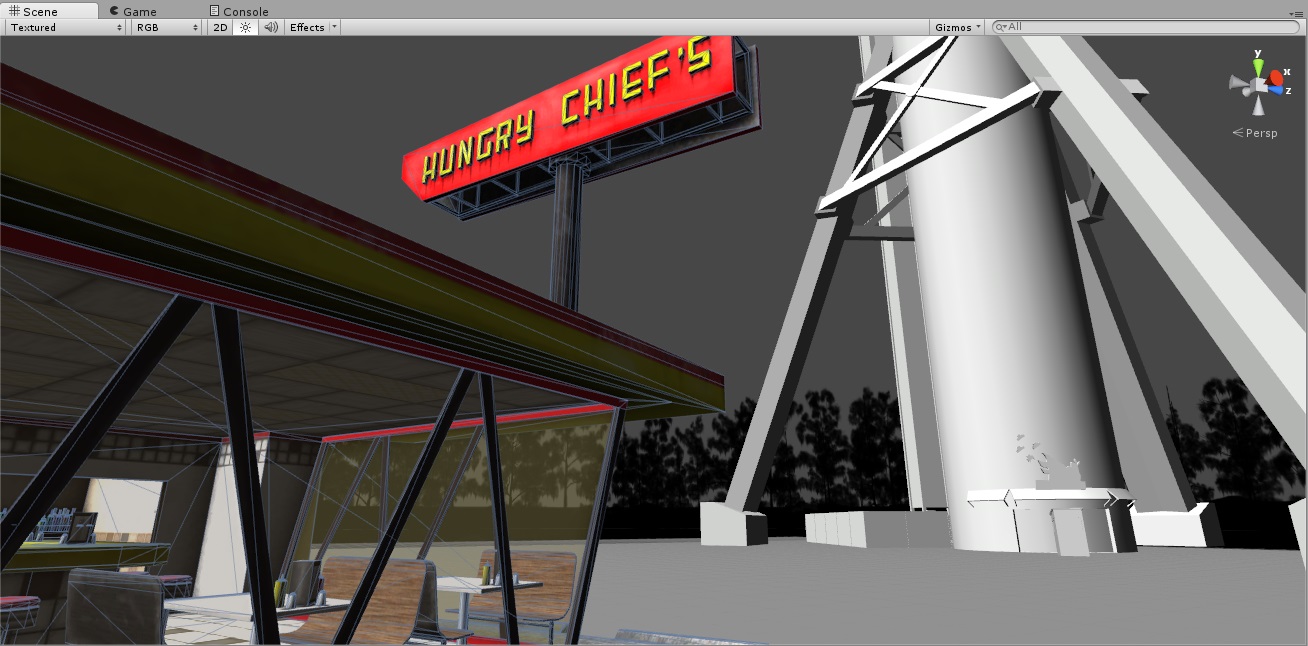
In creating Knee Deep, story is our focus. It’s a large part of why we love adventure games. Being drawn into another world, seeing things from the perspective of other characters makes for a compelling experience.
Yet, the mechanics of many adventure games often get in the way of storytelling: fiddly inventory menus distract from the story, too many conversation options dilute the narrative, or awkward controls make playing a chore. To avoid such a fate for our game, we’ve been looking at ways to craft mechanics that actually support the narrative.
To do this, we’ve been “white-boxing” scenes to test various elements of the game. White-boxing is standard game development practice, a technique used to gauge aspects of the game’s design by mocking it up in the engine. Think of it like an outline for a speech or an artist’s sketch before painting—it allows us to quickly piece together a level and test various elements to see if they work—the layout of a scene, movement controls, how characters interact with the environment, etc.—without having finished artwork.
Given the strong tradition of adventure game mechanics, white-boxing is our method for testing new ideas regarding movement controls, conversations, and even simple things like scene changes. To be certain, we’re not taking any aspect of the design for granted. For example, it was through white-box testing that we were compelled to ditch point-and-click controls because they just don’t feel right for the game.
At first this seemed like a scary proposition. Could we really abandon the basic navigation tool so many adventure games incorporate? It was only through white boxing that we could identify on what *this* game needed. Knee Deep doesn’t feature a lot of puzzle-solving or exploration, so point-and-click controls feel out of sync with the experience. The gameplay rightly revolves around characters and conversations, which naturally requires a control scheme tailored for this purpose. As such, we’ve been testing new controls to zero-in on the optimal configuration.
White-boxing is an effective game design tool, particularly as we look to break from adventure gaming convention while ensuring these new techniques actually feel comfortable in play. It is our hope that through this steady, disciplined iteration that we can bring a unique voice to this genre and tell a great story in our own way.

